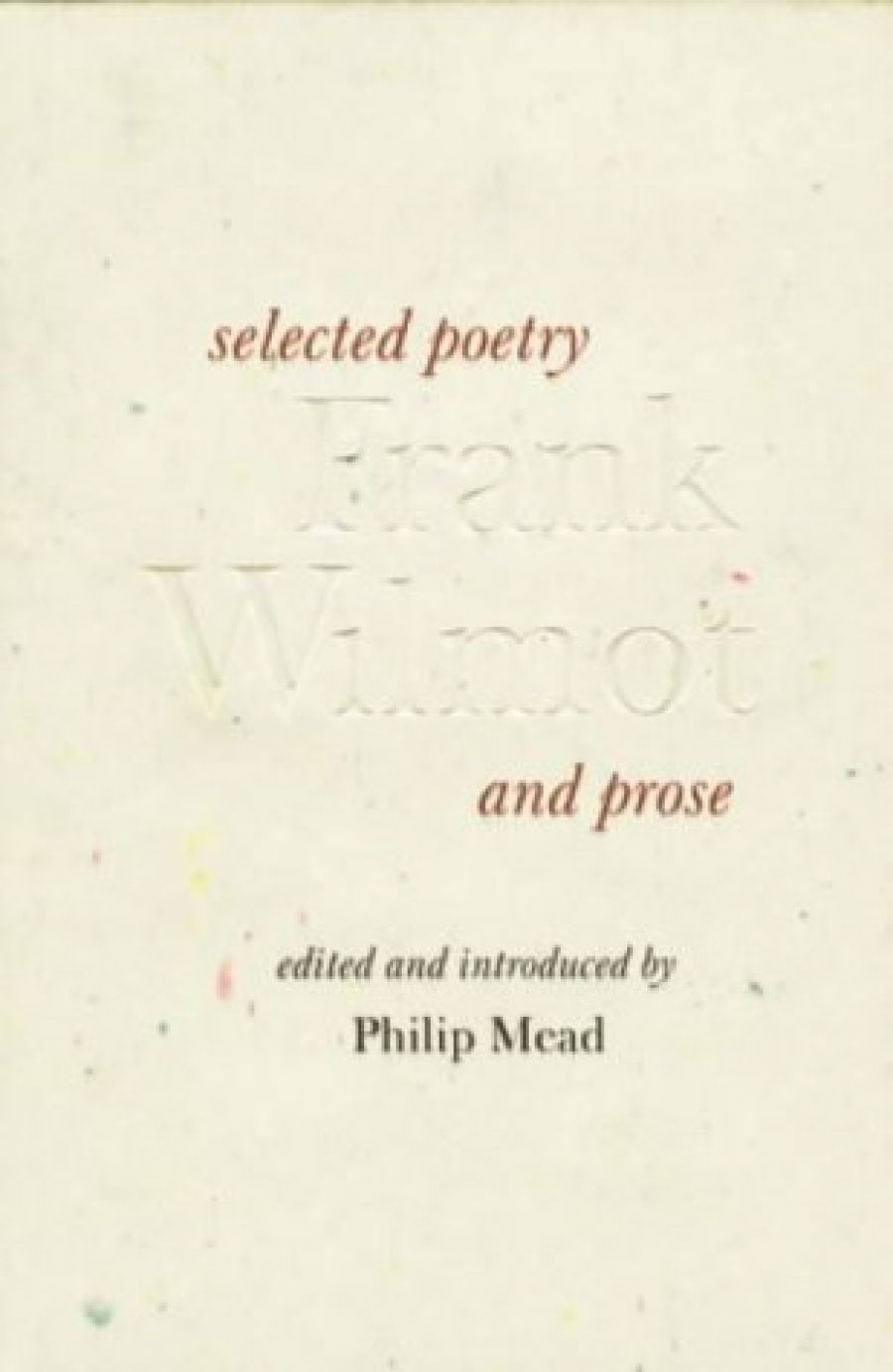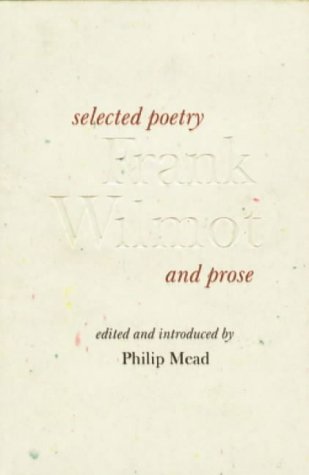
- Free Article: No
- Contents Category: Poetry
- Review Article: Yes
- Article Title: Modernist Traces
- Online Only: No
- Custom Highlight Text:
Frank Wilmot has aways existed in my mind under his nom-de-poetical-plume: that is to say, as Furnley Maurice. This, even though his proper name was given in my first collection of Australian verse, that of H.M. Green forty-five years or so ago. For several decades, from the mid-1950s on, modernism was seen as a Good Thing and our stuffy Australian forebears were upbraided for not taking it on more quickly. Over those years we strove to find the modernist traces which had gone ahead of us: in Kenneth Slessor or Chester Cobb, in Margaret Preston and Adrian Lawlor, in Walter Burley Griffin. Some of us had turned against aspects of this imprecise movement in the 1950s, I admit, because of its associations with fascism, but who could really resist for long the world of Picasso, Stravinsky, Woolf, Joyce, and Auden? What incomparable riches were there, I felt, and still do.
- Book 1 Title: Frank Wilmot
- Book 1 Subtitle: Selected poetry and prose
- Book 1 Biblio: Melbourne University Press, $24.95 hb, 162 pp
- Book 1 Cover Small (400 x 600):

- Book 1 Cover (800 x 1200):

- Book 2 Title: Frank Wilmot
- Book 2 Subtitle: Printer and Publisher
- Book 2 Biblio: Red Rooster Press
The question, who were the modernists, will not go away, though the giant, garish figure of Ern Malley stands in the way, like Cerberus dressed up in glad rags for Sid Nolan’s birthday party. But the Australian near-past needs proper explorations and recognitions. This being the case, it is timely that Philip Mead has brought the admirable Wilmot/Maurice back to our notice, a poet who hammered out his own brand of urban modernism without passing through the Lindsayite charm school.
Furnley Maurice (the name was put together from the rustic suburbs of Ferntree Gully and Beaumaris) lacked the linguistic elegance of Slessor. Indeed, unlike Slessor, or Ezra Pound, or the short-lived James Elroy Flecker, he did not start out from an art nouveau elegance of diction and coloration.
His style is less homogeneous; in another age it might even have been called more manly. The modern movement called for an organically unified artwork, and this he did not produce, I think. Even in his vigorously original poems, the ‘Melbourne Odes’, which include ‘The Victoria Markets Recollected in Tranquillity’ (swallow that for a title, O fabled Ern!), we can detect passages of literary worsted among the lively contemporary language. On the one hand, we find the high poetical mellifluity of:
The buildings, in a faint, unearthly glow
Tremble in sourceless light and melting shade;
They stir like blossomed wattle lifting slow
As a remembered wind moves down the glade.
But on the other, such unembarrassed jauntiness as in these market lines:
A smiling Chinaman upends a bag
And spills upon the bench with thunder-thud
(A nearby urchin trilling the latest rag)
Potatoes caked with loamy native mud.
Andean pinnacles of labelled jam.
The melting succulence of two-toothed lamb
The little bands of hemp that truss
The succulent asparagus
That stands like tiny sheaves of purple wheat
The quality of the latter passage is self-evident. It is hard to know quite why, but writing that is palpably full of things is automatically good: evidence of a writer’s ability to compete with God in the creation of the world. And nowadays at least we feel it to be doubly good if the temper of the writing is democratic; the rollicking rhymes of Furnley Maurice’s market invitation bear witness to that, I feel.
This is poetry that comes down the popular modernist line which runs from Sandburg and perhaps Kipling to Bruce Dawe. It reveals something of mimetic value that was happening in Melbourne verse between the wars, which we have not sufficiently valued: something far sturdier than L.L. Politzer’s vers-libre impressions and far less arcane than Bertram Higgins in his remarkable Mordecaius Overture.
Along with Philip Mead’s selection of the work we have a small biographical study of Wilmot by that valuable labourer in the vineyard, Hugh Anderson. It gives us a good picture of the poet’s public and publishing self: Frank Wilmot: Printer and publisher would stand most helpfully on your bookshelf alongside Mead’s representations of the writings. Furnley Maurice is back in town, then, and the Victoria Market, recurrently threatened by mindless developers, remains a site of popular joy.


Comments powered by CComment